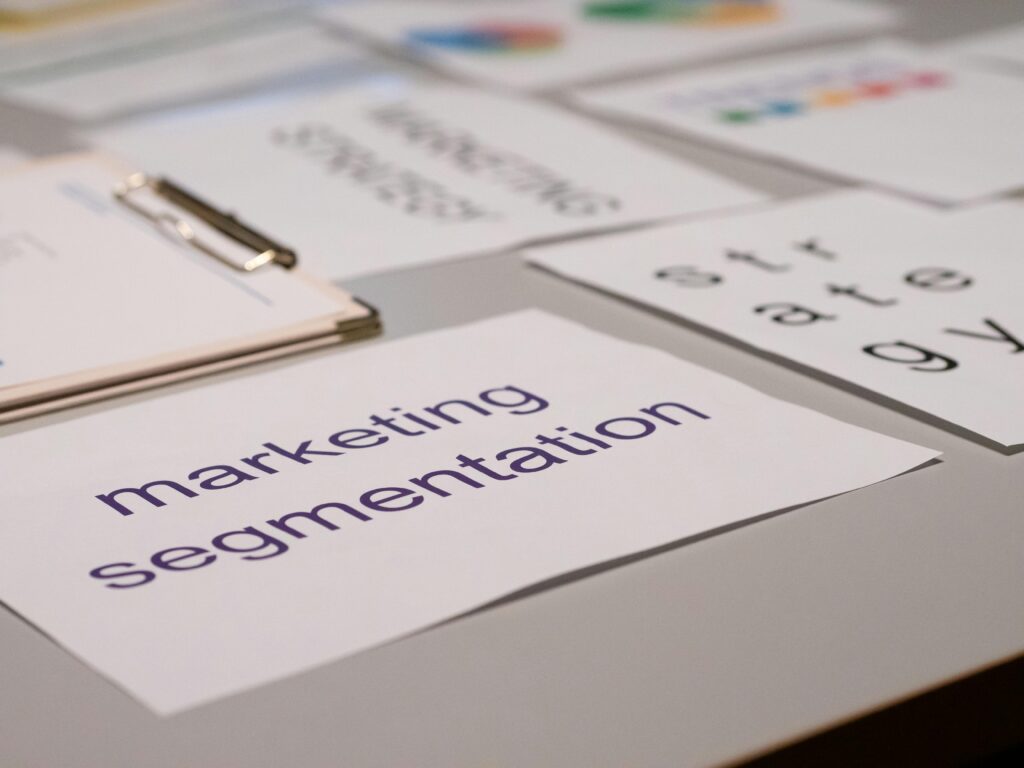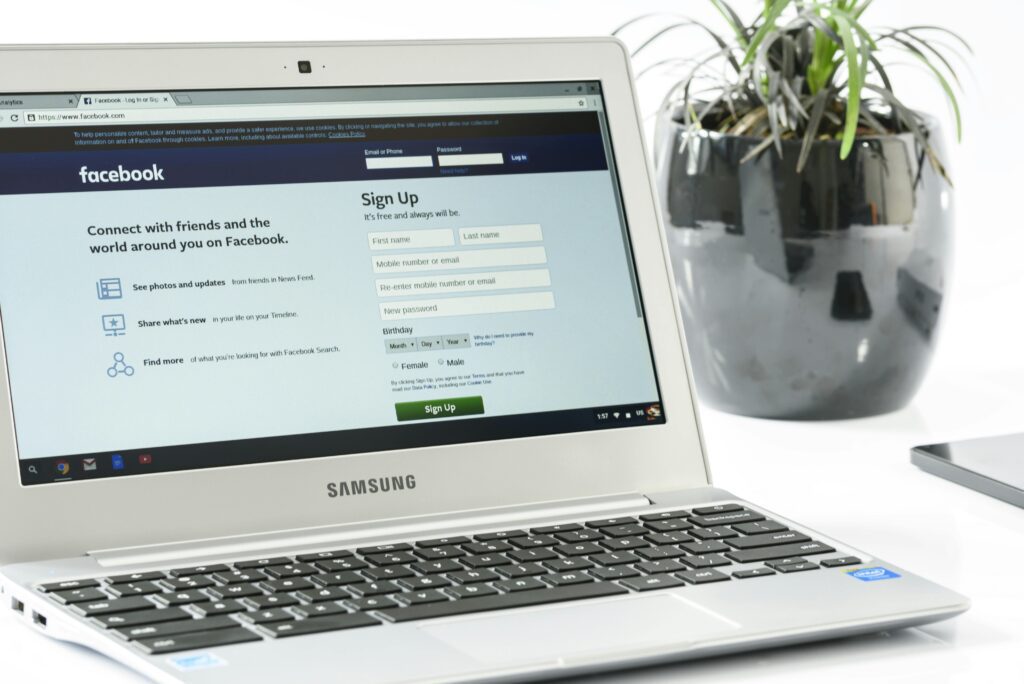Introduction
Buckle up, business owners – here’s a jaw-dropping statistic that will blow your mind: companies using marketing automation see an explosive average ROI of $5.44 for every dollar spent within the first three years! Yet here’s the kicker – 76% of businesses are still struggling to recover the cost of customer acquisition, missing out on what could be the most game-changing opportunity of their lifetime.
Customer Lifecycle Automation isn’t just another buzzword – it’s your golden ticket to transforming every single customer interaction from first hello to lifelong advocacy! This revolutionary approach to automating customer touchpoints will slash your operational costs by up to 30% while skyrocketing your revenue by approximately 34%. Talk about a win-win that’ll make your competitors green with envy!
Whether you’re a scrappy small business owner wearing ten different hats or scaling a rapidly growing enterprise, implementing strategic customer lifecycle automation will save you countless hours while delivering the personalized experiences that make your customers absolutely fall in love with your brand. Get this – 91% of marketers swear that automation helps them crush their objectives, while 86% of customers report staying more loyal to businesses that invest in onboarding content.
Ready to dive into the automation revolution? Throughout this power-packed guide, you’ll discover ten absolutely proven best practices that will completely transform how your business nurtures relationships, drives conversions, and maximizes customer lifetime value through intelligent automation. Let’s make your business unstoppable!
1. Start with Comprehensive Customer Journey Mapping
Your Customer Lifecycle Automation success story begins with understanding every single interaction your customers have with your brand – and we mean EVERY interaction! This foundational practice involves creating a detailed roadmap that identifies all touchpoints from initial awareness through passionate advocacy, building the ultimate blueprint that guides your automation strategy to victory.
Jump into action by analyzing your current customer journey across all channels – your website, social media platforms, email campaigns, and customer support interactions. Here’s what’ll get you excited: companies using comprehensive journey mapping report up to 30% reduction in customer onboarding time and 25% improvement in satisfaction scores. Plus, this detailed mapping reveals those sneaky drop-off points where customers typically disengage, empowering you to implement targeted automation interventions that save the day!
The real magic happens when you create dynamic journey maps that adapt in real-time based on customer behavior and preferences. Modern businesses are ditching static, boring journey models and embracing AI-powered mapping that responds to individual customer needs like a personal concierge. This approach enables you to deliver exactly the right message at exactly the right time, dramatically boosting conversion rates and customer retention!
2. Implement Behavioral Trigger-Based Automation
Transform your marketing from reactive to proactive by implementing behavioral triggers that respond automatically to customer actions like a perfectly choreographed dance! This game-changing practice involves setting up automated workflows that spring into action when customers perform specific behaviors like visiting pricing pages, downloading your amazing content, or abandoning their shopping carts.
Behavioral-based targeting allows you to create highly personalized campaigns that resonate with individual customer needs like nothing else can! Picture this: when a customer abandons their cart, your automated sequence swoops in with a recovery email within one hour, follows up with an irresistible discount offer after 24 hours, and delivers a final friendly reminder after 72 hours. Companies implementing behavioral triggers are celebrating up to 50% increase in email open rates and revenue!
The absolute power of behavioral automation lies in its ability to capture customer intent at that perfect, magical moment when they’re most receptive. By tracking actions like time spent on specific pages, product views, and email engagement patterns, you can create sophisticated automation rules that guide customers naturally through their buying journey like a helpful friend. This approach ensures every customer receives relevant, timely communications that feel personal rather than robotic!
3. Create Personalized Welcome and Onboarding Sequences
Your onboarding sequence represents that absolutely critical first impression that determines whether new customers will become engaged, long-term advocates who sing your praises from the rooftops! Companies with strong onboarding processes improve new customer retention by over 82%, making this automation absolutely essential for explosive business growth.
Develop a multi-touchpoint onboarding workflow that includes immediate welcome emails that make customers feel like VIPs, interactive product tours that showcase your brilliance, progress tracking checklists that celebrate every milestone, and success celebrations that make customers feel accomplished. Here’s the exciting part: automated onboarding can reduce support tickets by up to 40% while ensuring customers reach their “aha moment” faster than ever before!
The most effective onboarding automation adapts to different customer segments and goals like a chameleon. Create personalized pathways based on customer type, product interest, or stated objectives during signup – it’s like having a personal guide for every customer! Incorporate interactive elements like walkthrough tutorials, in-app checklists, and contextual help resources that activate based on user behavior and progress, creating an experience that feels tailor-made!
4. Establish Advanced Customer Segmentation and Personalization

Customer segmentation through automation tools enables businesses to create detailed segments based on purchasing behavior, preferences, and engagement levels, leading to higher customer lifetime value that’ll make your accountant do a happy dance! This practice involves using customer data platforms to automatically categorize customers into meaningful groups that receive perfectly tailored messaging and offers.
Modern segmentation goes way beyond basic demographics to include behavioral patterns, purchase history, engagement levels, and predictive analytics that would make a fortune teller jealous. Companies implementing advanced segmentation report up to 760% increase in revenue from email marketing – now that’s what we call a home run! Automated segmentation allows you to create dynamic groups that update in real-time as customer behavior changes, keeping your targeting razor-sharp.
Implement segmentation based on customer lifecycle stages, product preferences, engagement frequency, and value potential to create experiences that feel like they were crafted by mind readers. This approach enables you to deliver hyper-personalized experiences that make each customer feel like your only customer. Combining segmentation with predictive analytics helps you identify high-value customers early and nurture them with premium experiences that maximize their lifetime value!
5. Deploy Automated Lead Nurturing and Scoring Systems
Lead nurturing automation ensures consistent, relevant communication that keeps your business top-of-mind while prospects make buying decisions – like having a friendly sales assistant working 24/7! Marketing automation can lead to a 14.5% increase in sales productivity while ensuring no potential customer falls through the cracks and disappears into the digital void.
Create sophisticated lead scoring models that automatically assign points based on customer actions, demographics, and engagement levels like a video game that rewards engagement. Your nurturing sequences should deliver educational content, compelling case studies, and social proof at strategic intervals that guide prospects naturally toward purchase decisions. Companies with mature lead nurturing generate 50% more sales-ready leads at 33% lower cost – talk about efficiency that’ll make your CFO smile!
The most effective lead nurturing automation adapts messaging based on prospect behavior and interest level like a skilled conversationalist. Implement branching logic that sends different content paths based on email opens, link clicks, and website activity, creating a personalized journey for each prospect. Integrate your lead scoring with sales alerts so your team can intervene personally when prospects reach predetermined engagement thresholds – it’s like having a crystal ball that tells you when someone’s ready to buy!
6. Automate Customer Retention and Re-engagement Campaigns
Customer retention through automation represents one of the highest ROI activities for any business, as increasing customer retention rates by just 5% boosts profits by 25% to 95% – now that’s what we call a profit multiplier! This practice involves creating automated workflows that identify at-risk customers and deploy targeted intervention strategies before they even think about leaving.
Develop re-engagement campaigns that activate when customers show signs of decreased activity or engagement like a smoke detector for customer relationships. 45% of win-back email recipients read subsequent messages, and 75% of re-engaged audiences continue engaging within 89 days – proof that second chances really work! Create automated sequences that offer personalized incentives, gather feedback about potential issues, and reconnect customers with your brand value in ways that make them remember why they loved you in the first place.
Implement predictive analytics to identify churn risk patterns and automatically trigger retention campaigns like having a sixth sense for customer satisfaction. Your automation should include multiple touchpoints across email, SMS, and social media to maximize reach and effectiveness. Create personalized offers and experiences based on individual customer history and preferences to increase the likelihood of successful re-engagement and turn potential churners into loyal advocates!
7. Implement Automated Cross-selling and Upselling Workflows
Automated upselling and cross-selling strategies can boost sales and revenue while increasing customer retention by presenting timely, relevant offers based on customer behavior and purchase history – it’s like having a personal shopping assistant for every customer! This practice transforms your existing customer base into a consistent revenue growth engine that keeps pumping out profits.
Create intelligent product recommendation engines that analyze purchase patterns, browsing behavior, and customer preferences to suggest complementary or upgraded products like a mind-reading sales expert. Companies using automated cross-selling report average order value increases of 30-50% – imagine what that boost could do for your bottom line! Your workflows should present these golden opportunities at optimal moments, such as post-purchase confirmations, renewal notifications, or during support interactions.
The secret sauce to successful automated selling lies in perfect timing and laser-focused relevance. Implement triggers based on product usage data, subscription milestones, or seasonal patterns that indicate readiness for additional purchases. Create educational sequences that demonstrate the value and benefits of recommended products rather than simply pushing sales messages – show them why they need it, and they’ll thank you for the suggestion!
8. Optimize Abandoned Cart and Purchase Recovery Automation
Abandoned cart automation can recover up to 30% of otherwise lost sales, making this one of the most immediately impactful Customer Lifecycle Automation practices you can implement – it’s literally like finding money lying on the ground! This involves creating sophisticated sequences that re-engage customers who showed purchase intent but didn’t complete their transactions.
Design multi-step recovery workflows that include immediate cart reminder emails, compelling social proof and urgency elements, limited-time discount offers that create FOMO, and alternative product suggestions that might be even better fits. Companies implementing comprehensive abandoned cart sequences report revenue recovery rates of 15-25% – that’s pure profit that was almost lost forever!
Implement advanced cart recovery that goes beyond simple email reminders to include SMS messages, retargeting ads, and personalized phone calls for high-value abandoned carts. Analyze abandonment patterns to identify and address systematic issues in your checkout process while using automation to guide customers past common obstacles like shipping concerns, security worries, or comparison shopping paralysis!
9. Create Feedback Collection and Customer Success Automation
Automated feedback collection ensures you continuously understand customer satisfaction and identify improvement opportunities without overwhelming your team with manual outreach – it’s like having a customer satisfaction radar that never sleeps! This practice helps you maintain high service quality while proactively addressing potential issues before they become problems.
Implement automated survey deployment at key lifecycle moments such as post-purchase, after support interactions, or at subscription renewal times when customers are most likely to share honest feedback. Companies using automated feedback systems report 30% improvement in customer satisfaction scores – proof that listening to customers really pays off! Create branching logic that automatically escalates negative feedback to human teams while routing positive feedback for testimonial requests and success stories.
Your feedback automation should include Net Promoter Score tracking, satisfaction surveys, and product usage analytics that provide comprehensive customer health monitoring like a full-body scan for your business relationships. Integrate feedback data with your CRM and customer success platforms to trigger automated interventions when satisfaction scores drop below acceptable thresholds – catch problems before they become disasters!
10. Integrate Predictive Analytics for Proactive Customer Management
Predictive analytics enables businesses to forecast customer behavior and implement proactive retention strategies that can reduce churn by up to 40% – it’s like having a crystal ball that actually works! This cutting-edge practice represents the future of Customer Lifecycle Automation, allowing you to address customer needs before they even realize they have them.
Implement machine learning models that analyze customer data patterns to predict future behaviors, purchase likelihood, and churn risk with scary accuracy. Create automated workflows that activate based on these predictions, such as reaching out to customers showing early churn indicators or promoting relevant products to customers likely to make additional purchases. Companies using predictive customer analytics report 25% improvement in marketing ROI – talk about getting ahead of the game!
The incredible power of predictive automation lies in its ability to create truly personalized customer experiences at scale that feel almost magical. Use predictive insights to automatically adjust communication frequency, content recommendations, and offer timing for individual customers like having a personal assistant for each one. Integrate predictive models with your entire customer lifecycle automation stack to create seamless, intelligent experiences that feel intuitive and delightful to your customers!
Conclusion
Implementing these ten Customer Lifecycle Automation best practices will completely revolutionize your business operations and dramatically transform your customer relationships into profit-generating machines! The statistics don’t lie: companies embracing comprehensive automation strategies see average ROI improvements of 544%, while 76% of businesses using automation achieve positive returns within the first year – that’s the kind of success story you want to be part of!
Your next power move is to begin with customer journey mapping and behavioral triggers, as these foundational practices will provide the rock-solid framework for all other automation efforts. Start small with one or two key touchpoints before expanding to comprehensive lifecycle management – Rome wasn’t built in a day, but when it was finished, it was spectacular! Remember that 91% of marketers confirm automation helps them achieve their objectives, making this investment absolutely essential for competitive advantage in today’s fast-paced market.
Looking ahead, the future of Customer Lifecycle Automation will be shaped by AI-powered personalization, predictive analytics, and real-time customer journey orchestration that will make today’s automation look like child’s play! Businesses that implement these practices today will be perfectly positioned to leverage emerging technologies like conversational AI and advanced behavioral prediction models. The time to automate your customer lifecycle is RIGHT NOW – your customers, your team, and your bottom line will thank you for taking decisive action!
How much does it cost to implement Customer Lifecycle Automation for small businesses?
Customer Lifecycle Automation costs vary significantly based on your business size and complexity, but small businesses can start with basic automation for as little as $30-100 per month – that’s less than your monthly coffee budget! Entry-level platforms like MailChimp, Omnisend, or Encharge offer comprehensive automation features at affordable price points that won’t break the bank. Small businesses typically see positive ROI within 3-6 months, with many recovering their initial investment through increased efficiency and improved conversion rates faster than you can say “automated success!” The key is starting with essential automations like welcome sequences and abandoned cart recovery before expanding to more sophisticated features.
What are the biggest implementation challenges business owners face with lifecycle automation?
The primary challenges include data integration complexity, employee resistance to change, and choosing the right technology stack for your specific needs – but don’t let that scare you away from automation glory! Companies report that 68% of automation challenges stem from inadequate data quality and system integration issues, but here’s the good news: these are totally solvable problems! Many businesses also struggle with creating effective customer journey maps and setting up proper behavioral triggers without technical expertise, but modern no-code automation platforms have significantly reduced these barriers, allowing business owners to implement sophisticated automation without needing a computer science degree!
How quickly can I expect to see ROI from Customer Lifecycle Automation?
Most businesses see initial ROI from Customer Lifecycle Automation within 3-6 months of implementation, with 76% of companies experiencing positive returns within the first year – that’s faster than most traditional marketing investments! Quick wins typically come from abandoned cart recovery and email automation, which can immediately impact revenue like a turbo boost for your sales. Businesses implementing comprehensive automation strategies report average revenue increases of 34% within the first year – imagine what that could do for your business! The timeline depends on your implementation approach, but starting with high-impact, simple automations like welcome sequences and behavioral triggers typically delivers faster results than trying to automate everything simultaneously!
Read more
Boost Revenue Now: Essential Advertising KPIs Every CEO Uses
Advertising Automation KPIs Every Marketer Should Track Picture this: companies are crushing it with $5.44 back…
10 Game-Changing Facebook Ads Workflows for 2025 Growth
Picture this: 76% of businesses using Facebook ads workflows slash their campaign management time by 30%….
10 Deadly Retargeting Mistakes Business Owners Make
Did you know that retargeting campaigns can boost conversion rates by up to 150%? Yet many…
10 Invoice Automation Workflows That Skyrocket Cash Flow Now
Are you still stuck with paper invoices and typing in data by hand? Here’s a…
Revolutionary: 10 Social Media Automation Strategies Crushing Competition
Imagine this: you’re staring at your calendar, heart racing as you realize your biggest event…
10 Hidden Price drop Automation Secrets Competitors Don’t Know
Did you know that 77% of businesses using marketing automation see increased conversion rates, while…







